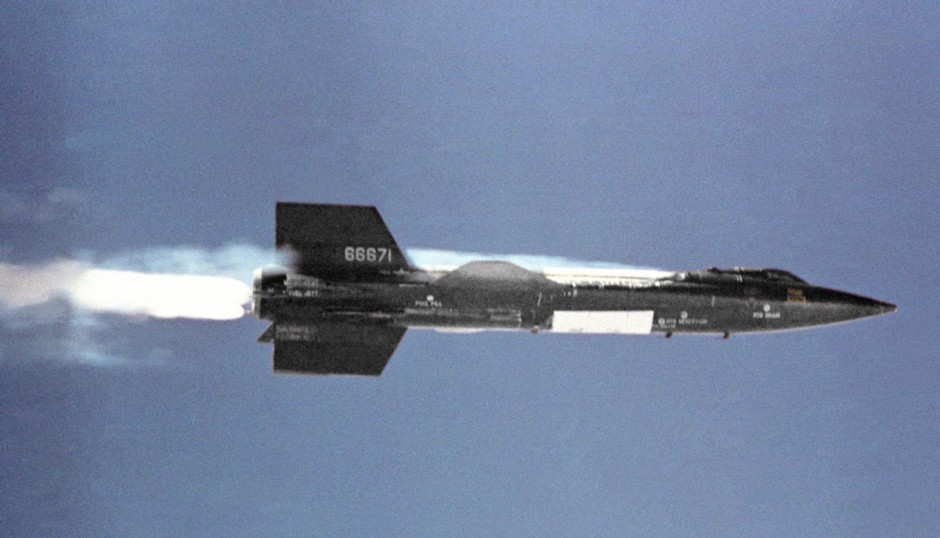Forecast
- The design, production and fielding of hypersonic missiles — though expensive and technologically complicated — is becoming more feasible.
- The United States and China will likely incorporate the first operational long-range hypersonic missiles into their arsenals by 2025, with Russia lagging a few years behind.
- Once they are deployed, hypersonic missiles will revolutionize warfighting in certain conventional and nuclear settings.
Analysis
A new arms race is unfolding between the world's great powers. Hypersonic missiles, which are both accurate and extremely fast, stand to change the face of modern warfare by rendering the current generation of missile defense systems ineffective. As competition heats up among Russia, China and the United States to be the first to deploy hypersonic missiles, each will become more vulnerable to attack by the others. If tensions rise, so will the risk of pre-emptive strikes among the longtime rivals.
Hypersonic missiles travel at least five times the speed of sound. Only a few other manmade devices are capable of reaching hypersonic speeds, including ballistic missiles, space launch vehicles and unmanned spacecraft such as the Boeing X-37. The only manned aircraft to achieve hypersonic speed is the rocket-powered North American X-15, which broke speed and altitude records when it was introduced in the 1960s.

The rocket-powered North American X-15 in flight. (NASA/Wikimedia Commons)
Recently, the focus of research in hypersonic technologies has shifted toward missile development, but several challenges must be overcome to make hypersonic missiles a reality. First, it is difficult to create a weapon that can reach hypersonic speeds while enduring the stress and extreme temperatures of hypersonic flight. It is harder still to ensure that the weapon can maintain those speeds for an extended period — enough time to reach its target. Second, high velocities can make a hypersonic vehicle sensitive to changes in flight conditions, resulting in instability in the missile's airframe during flight. Coupled with the fact that high speeds leave less time to course correct, this instability can make guidance of hypersonic missiles problematic. Finally, hypersonic vehicles' actual flight paths often do not match the predictions researchers derive from ground tests and theoretical models, lengthening the process of development.
Despite these obstacles, hypersonic missiles have some considerable advantages. Their speed enables them to reach their targets much more quickly than other missiles and to better penetrate enemy defense systems. Those with gliding capabilities can also cover great distances, enabling one country to strike at another from farther away. Guided hypersonic missiles would be more accurate than traditional ballistic missiles, and they could conceivably be armed with nuclear warheads, becoming a strike asset or a deterrent in nuclear warfare.
From Theory to Reality
It will not be long before hypersonic missiles find their way out of the lab and onto the battlefield. In late February, U.S. Maj. Gen. Thomas Masiello announced that the U.S. Air Force plans to have operational prototypes ready for testing by 2020. The U.S. Air Force already conducted four flights of the experimental X-51 hypersonic cruise missile from 2010 to 2013, two of which were considered successes. Meanwhile, Lockheed Martin has made substantial progress on its Hypersonic Air-breathing Weapon Concept and Tactical Boost Glide vehicle.
The X-51 WaveRider hypersonic flight test vehicle uploaded onto a B-52 bomber. (U.S. Air Force/Wikimedia Commons)
China is close behind, and it appears to be on track for deployment by 2020 as well. In 2014, China conducted three tests of its DF-ZF hypersonic strike vehicle, followed by three more in 2015. The U.S. military deemed all but one of the tests successful. Russia is developing its own hypersonic glide vehicle, the Yu-71, though its ambitions of fielding the vehicle in the next four years may be overly optimistic. (Moscow's sole test of the Yu-71, in 2015, was a failure.) But one of Russia's relatively short-range hypersonic missiles, the 3M22 Zircon, underwent its first test on March 18, and a second model (the BrahMos-II) will be ready for testing around 2017.

A scaled down model of the BrahMos-II hypersonic missile. (Wikimedia Commons)
As the world's biggest powers race to build up their hypersonic arsenals, the nature of battle will fundamentally change. Missile defense systems will struggle to counter hypersonic flight, making targets — especially large naval warships — more vulnerable to attack. In time, this could drive the development of directed-energy weapons (such as high-powered lasers or microwaves) as a possible way of countering hypersonic missiles. But as has been the case for revolutionary military technologies in the past, the best defense will be to destroy the missiles before they can launch, increasing war planners' emphasis on offensive action.
Countries will have an incentive to launch pre-emptive strikes against their enemies to knock out hypersonic missile caches before the missiles can be deployed. Moreover, guidance systems, along with command, control, intelligence, surveillance and reconnaissance networks — the weakest components of hypersonic missile capabilities — will become critical targets. At the same time, states with hypersonic missiles (and the bigger offensive advantage they bring) will have less need for stealth technology to penetrate enemy defenses.
Nuclear warfare — and strategies to deter nuclear conflict — will be altered as well. Though increasingly effective anti-ballistic missile technologies will continue to be important against opponents that lack hypersonic weapons, they will be of little use in countering hypersonic missiles equipped with nuclear warheads. Because hypersonic missiles are so difficult to detect and counter, countries could be motivated to pre-emptively strike at an enemy developing a hypersonic capability. As hypersonic missiles undermine the fragile balance among global nuclear powers more and more, many countries will be forced to re-examine their deterrence and national security strategies, potentially contributing to greater uncertainty and instability in the long run.
Strategic Review has a content sharing agreement with Stratfor Global Intelligence.









 resized.png)
